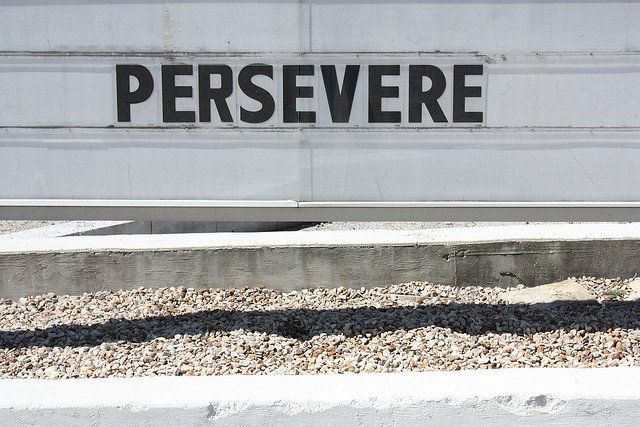When The Going Gets Tough

Leaders soldier on
In a previous article where I spoke about courage, I briefly described the situation of having to be driven into the deep forests of Mindanao passing at least three military checkpoints in a vehicle escorted by heavily-armed men.
While being in an area of prevalent insurgency and where kidnapping was good business, especially with the presence of international mining companies having frequent visits from well-paid expats, there is a static presence of risk and threats to security.
“Take me to the riot”
While the threat looms over employees, on occasion things would escalate at an unimaginable speed and urgency that differentiates an already tense situation with an actual crisis.
A few hours before my departure, coordinating communication suddenly became scarce, and I was advised to be prepared for an unannounced pick-up. They specifically advised that my things already be packed and ready at any time to leave post-haste.
Within minutes, the pick-up arrived escorted fore and aft with armed men in pick-ups. They came to a skidding stop on the dirt road fronting our camp.
An armed man jumped out of the back of our pick-up reaching for my bags and hurried me, “Let’s go! Let’s go!”
I jumped in and sat next to the chief mining engineer and an expat. We were careening at full speed and there was pin-drop silence with only the sound of my heart thumping in primal fear.
The silence was then broken when the engineer said: “We apologise but there has been a threat of ambush advised by our intelligence!”
He then casually started his story of being kidnapped once in Indonesia as if “It happens all the time”. The sick mitigating assurance for me was that they at least knew what to do with an impending security crisis.
Boardroom planners need to have a deep understanding of the differences between risk management/planning and actual “crisis management”.
I have often done strategic lectures covering frameworks for scenario analysis using Causal Loop Diagrams and PESTEL (Political, Economic, Sociological, Technological, Environmental, Legal).
While these frameworks are useful in giving us an appraisal of risks, it also tends to abstract the realism and urgency of an actual crisis when it is presented.
This tends to differentiate boardroom strategists from war-room strategists. While in a boardroom a leader would ideally facilitate, steer, elicit and seek consensus to issues, a crisis manager might see it best instead to direct action. People sometimes must be “told” what to do instead of being asked.
Crisis is often defined by its urgency. There is no luxury of time for consensus gathering.
According to S. J. Venette in Risk Communication, crisis is defined by the following common elements:
- Threat to the organisation (and its people)
- The element of time
- Short decision time
The consequence of having a crisis unmitigated and uncontrolled are usually severe. The urgency and the crisis’ rate of escalation is what makes a crisis unique from other problems.
A bad situation could take a sudden turn for the worst if not acted upon immediately. Surely it takes a different kind of leader when faced with a crisis situation.
In this case, a leader is also expected to signal a crisis when it is impending or immediately upon its onset.
It usually takes a certain amount of experience for leaders to recognise when a threat could escalate into an actual crisis.
Continue to communicate
At the onset of a crisis, leaders must also be able to communicate effectively in order for the organisation to suddenly switch from the prevailing “business as usual” mindset to a “crisis mindset”.
In the latter sense, a consent to direct immediate instruction and marshal resources at hand is temporarily put in the hands of a situational leader.
These crisis leaders either rise up to the occasion at the onset or are appointed immediately during the recognition or the signalling of an impending crisis.
In my experience working with the exploration and mining industries, I found that these organisations are always vacillating in the frays of risk and crisis.
They are usually subjected to natural and environmental risks, regulatory and social risks, security and insurgency/terrorist risks as well as confrontation and violence.
The environment is volatile. I have found that the best crisis leaders are those that immediately take to the field to get a firm handle of the situation.
Grace under pressure
It takes a certain amount of field command. An experienced crisis leader exhibits a certain “grace under pressure” while still acting urgently upon the situations presented to him/her.
The paradigms of planning still remain although these are taken up in faster cycles during a crisis.
Intelligence/information and communication are paramount. These three steps are usually taken up in constant and dynamic cycles:
- Situational appraisal and intelligence reporting
- Marshalling of resources
- Execution and monitoring
Strategic and tactical interventions are taken in very quick cycles until situations are controlled. I have seen crisis situations where round the clock (hour by hour) monitoring is required. War room activity is hectic.
When action and monitoring cycles begin to space further apart, it usually signals the containment of crisis situations. This eventually stabilises and once announced as “under control”, work resumes and activity then goes back to usual.
The principles of engagement also apply to crisis leadership. During a crisis situation, the most precious commodity that a leader should marshal is trust.
When leaders are trusted, it is easier for them to get a consensual control over direction and the marshalling of common resources.
According to various sources there is usually a progression as to how trust is developed.
Confidence: The leader must be experienced and knowledgeable of the current situation.
Integrity: The leader has a track record of delivering on expectations and commitments.
Trust: The leader can be trusted enough to direct people and resources in a way that is beneficial to the team and the organisation with utmost responsibility.
Modern business is now subjected to greater accountabilities under the public eye where corporate reputation is sometimes subjected to certain risks and probable crises.
There are lessons to be learned across various industries and it’s always useful to look back and take examples of cases of crisis leadership and management as you can never tell when these skills are needed.
John Walter Baybay is a regional management consultant who has worked more than 17 years in the areas of corporate strategic planning and economic planning. He is a competitive athlete who balances his time between business coaching, family and working with communities. Connect with him at editor@leaderonomics.com.
Leadership




